

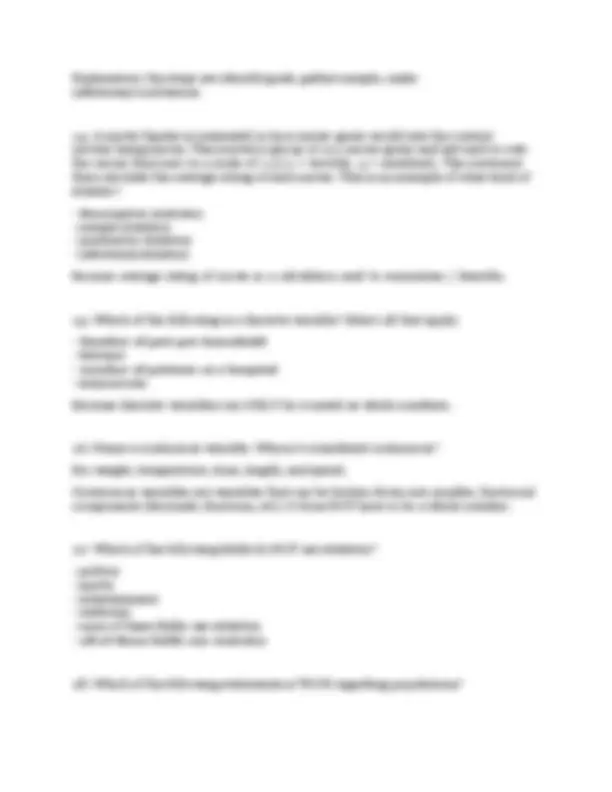
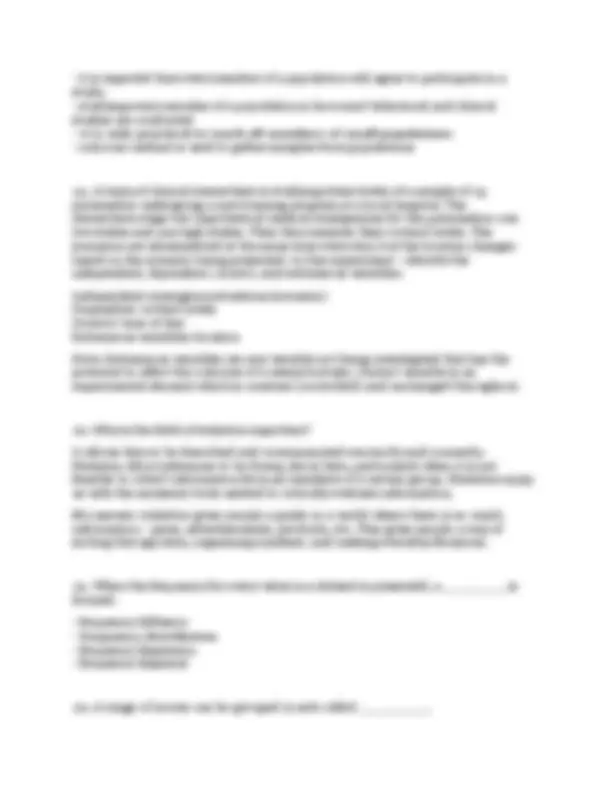
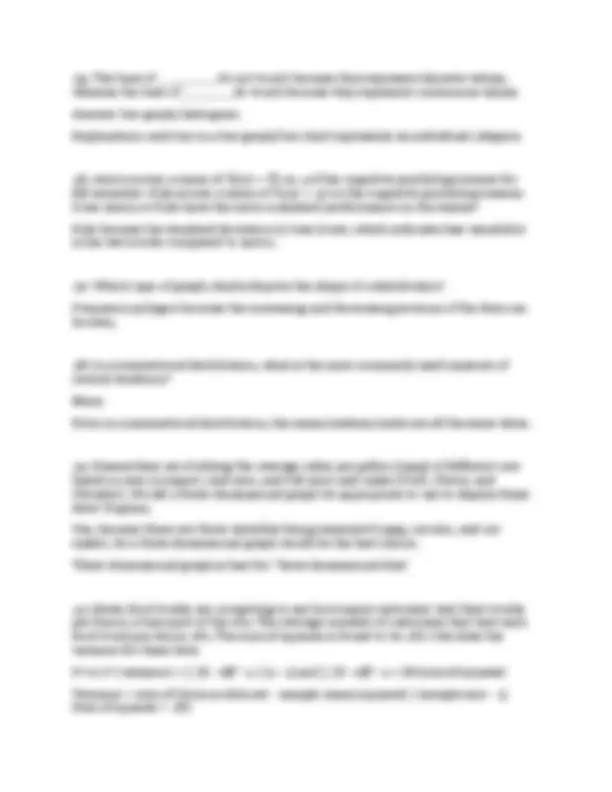
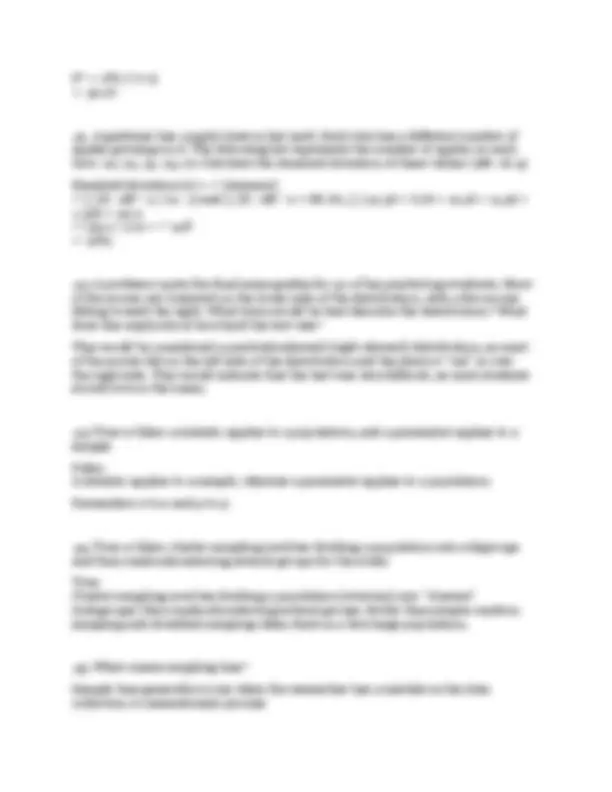
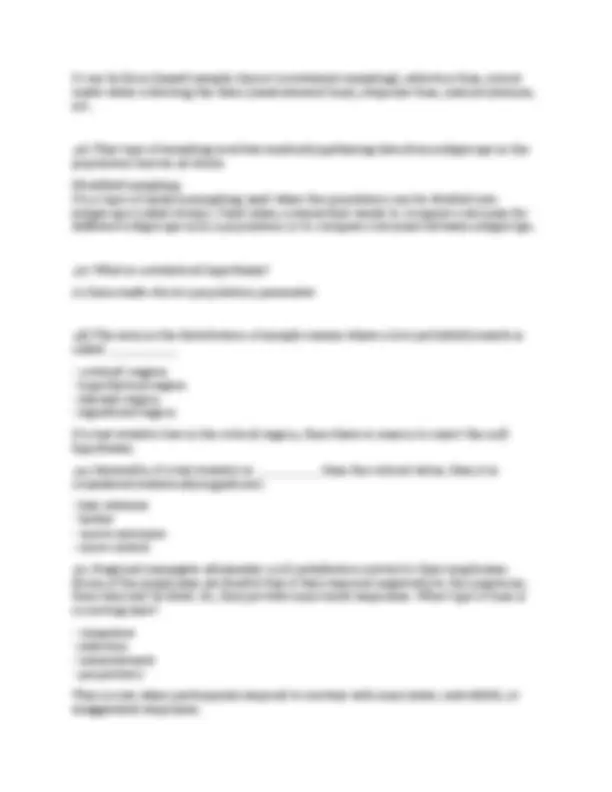
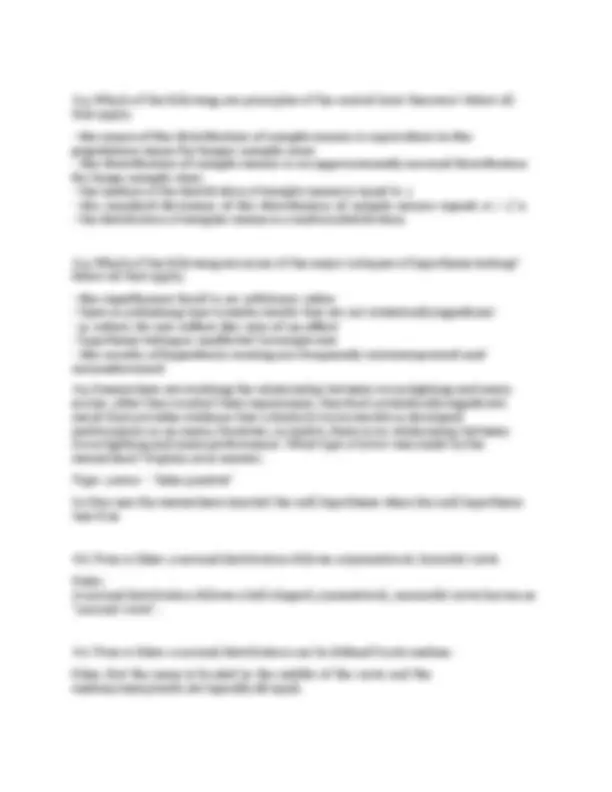
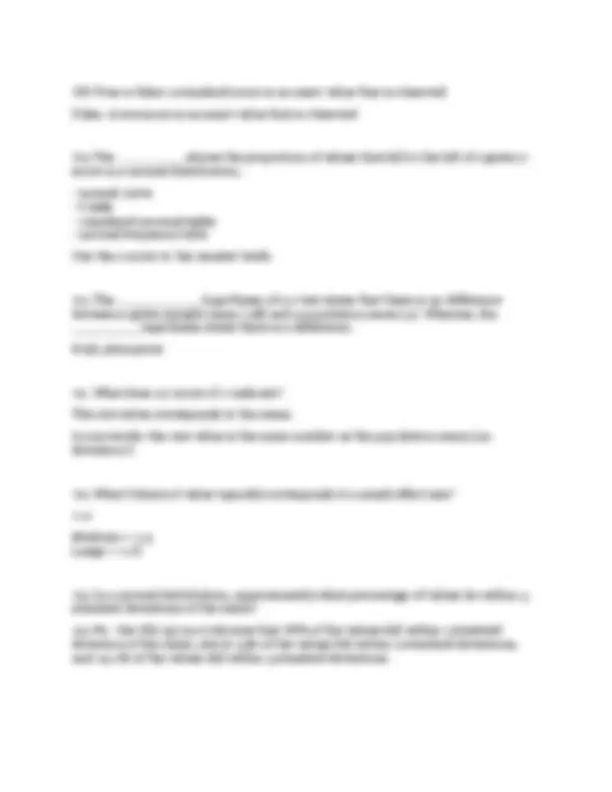
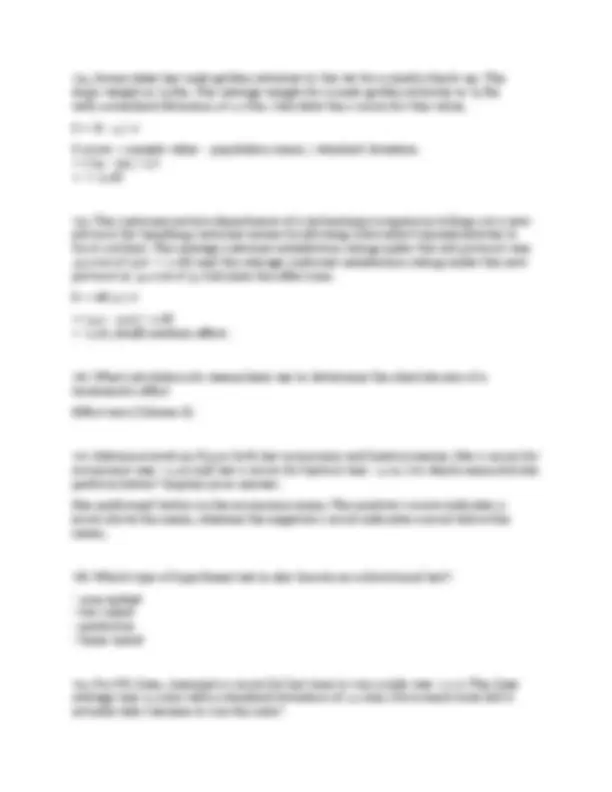
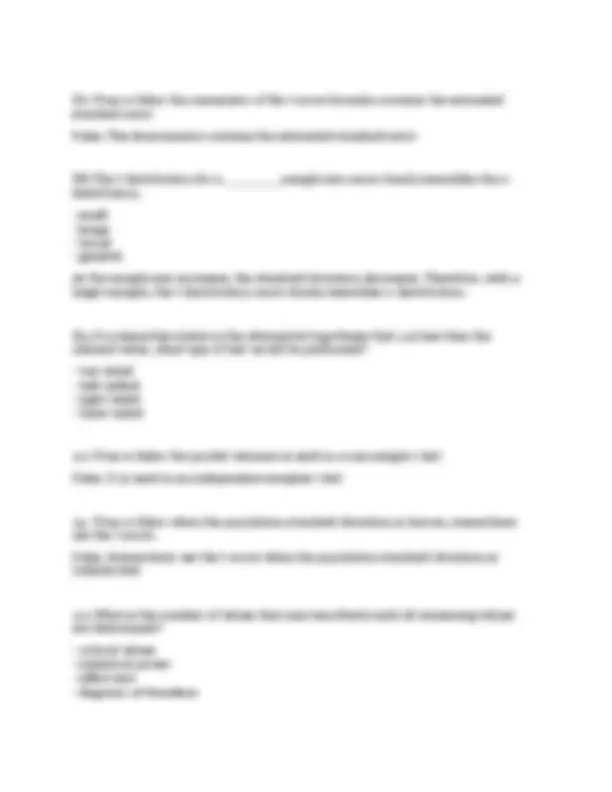
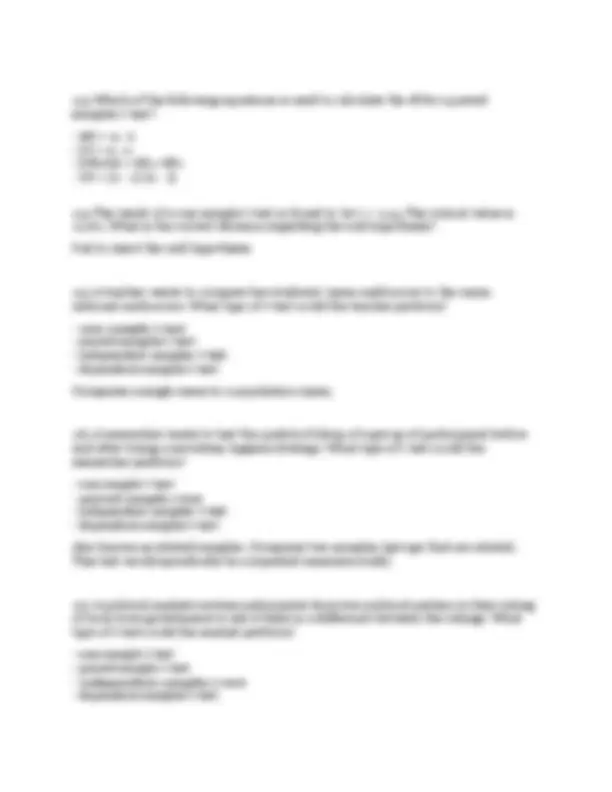
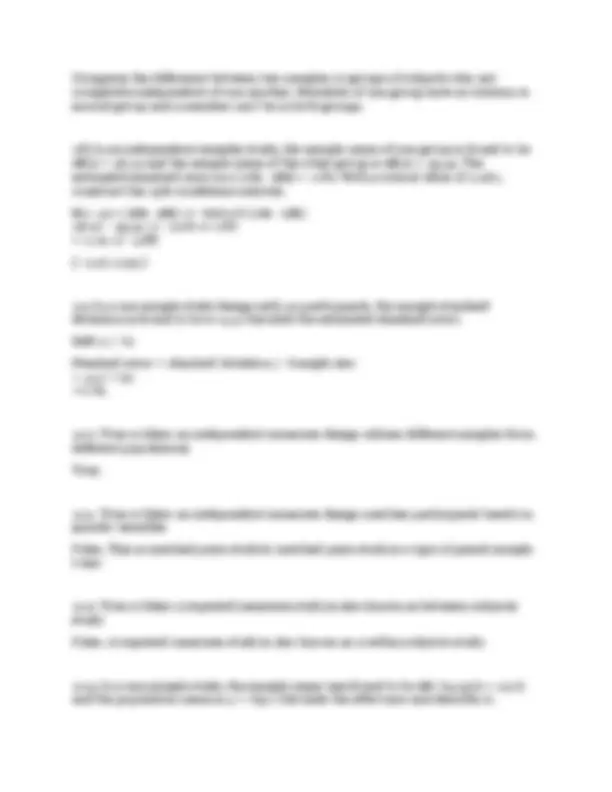
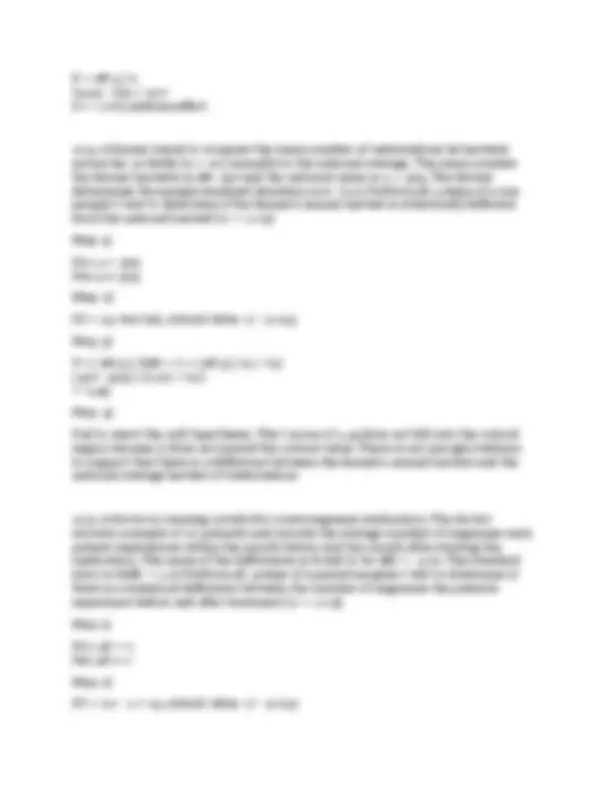
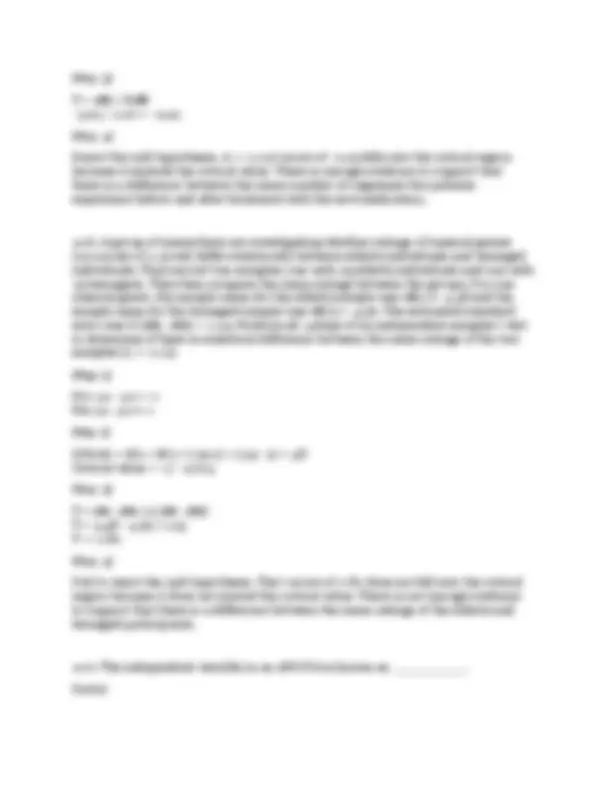
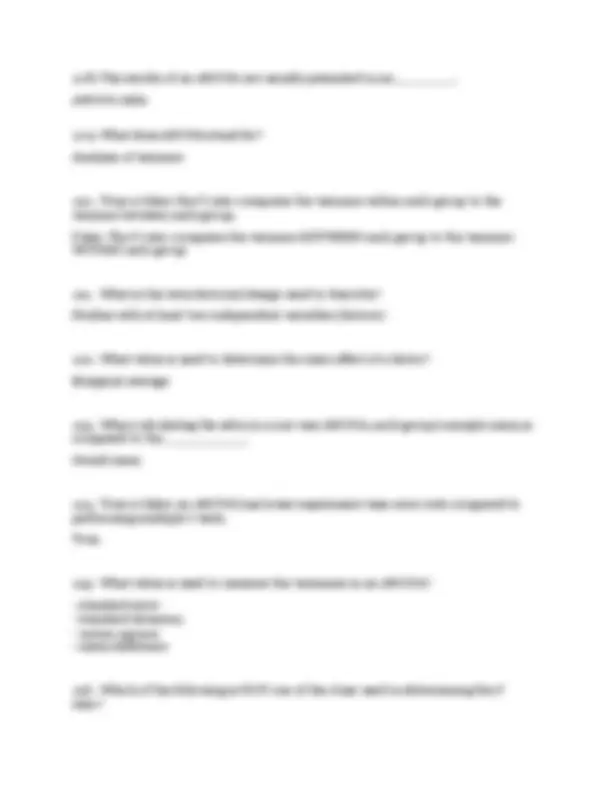
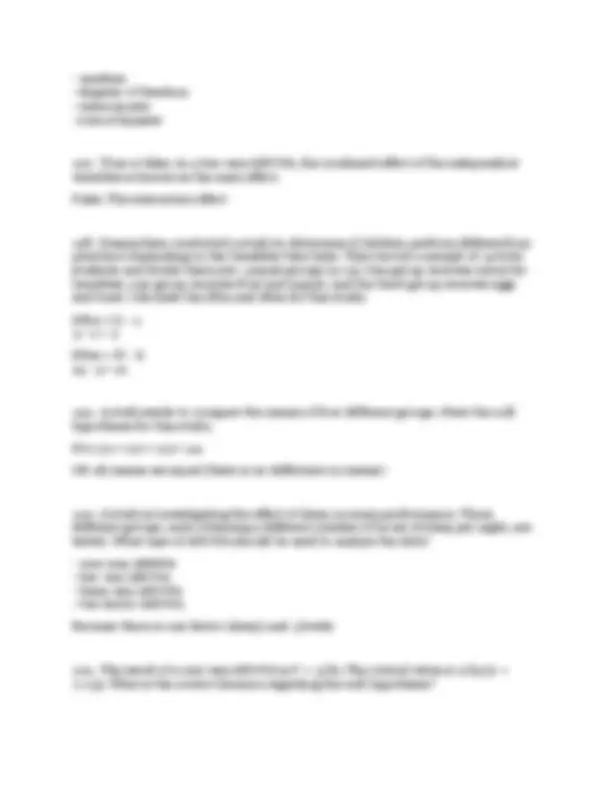
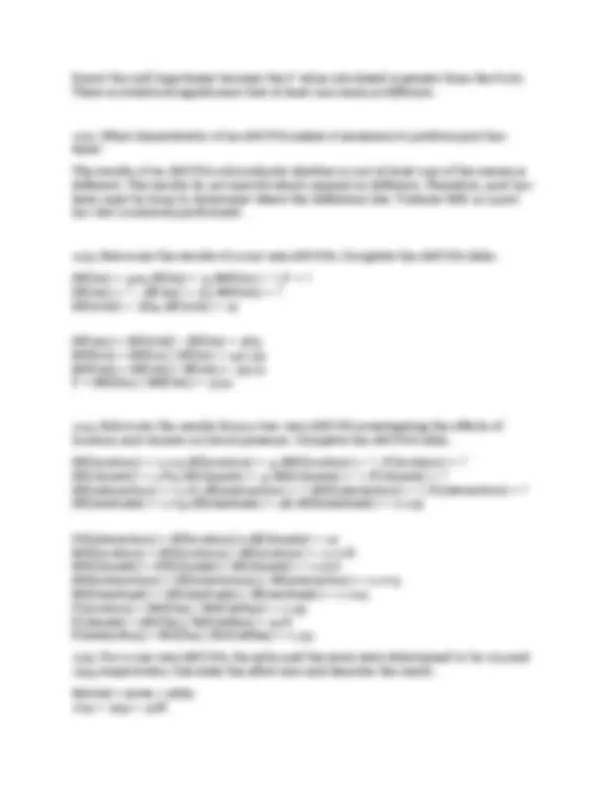
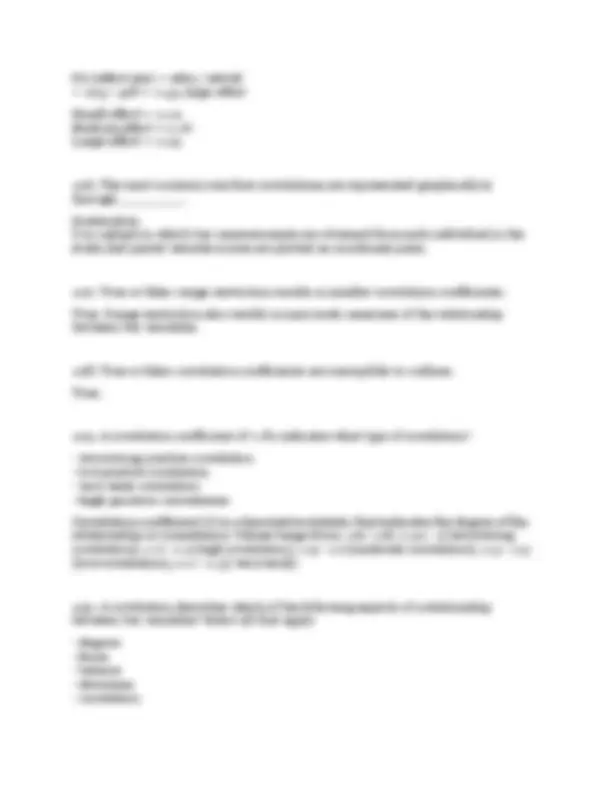
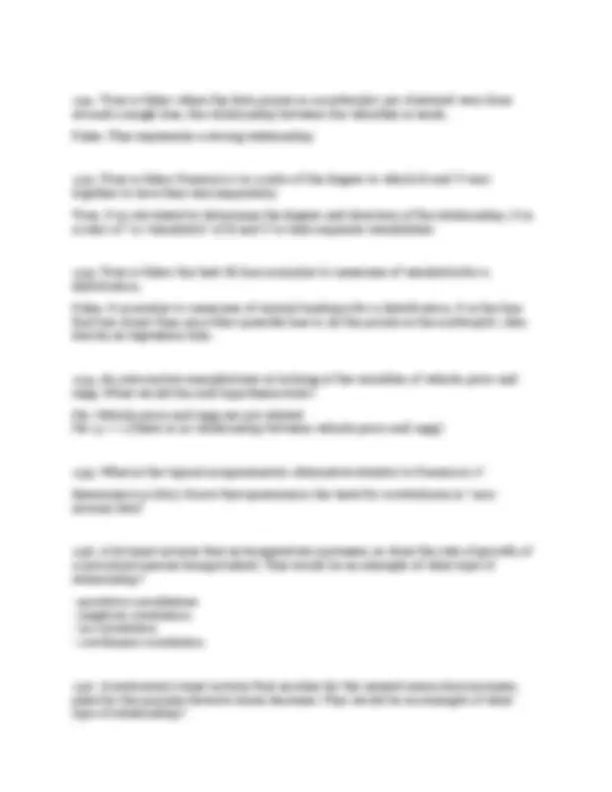
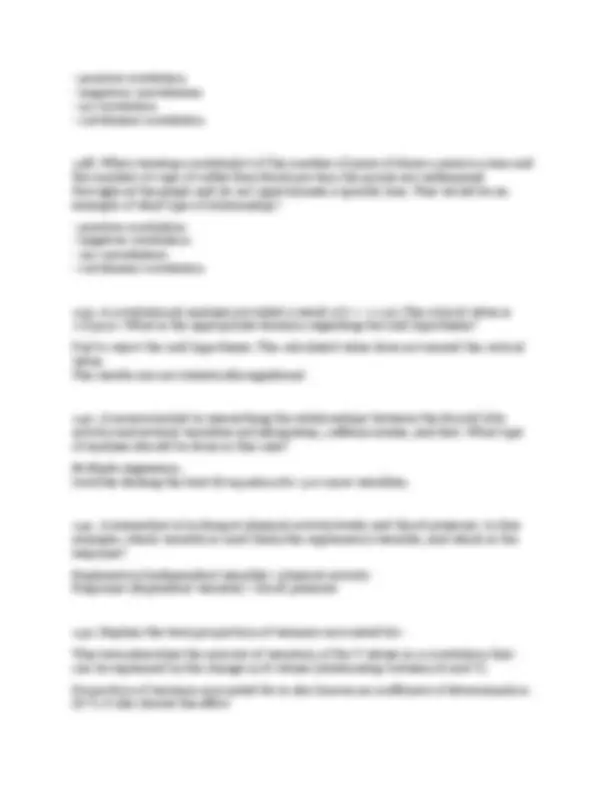
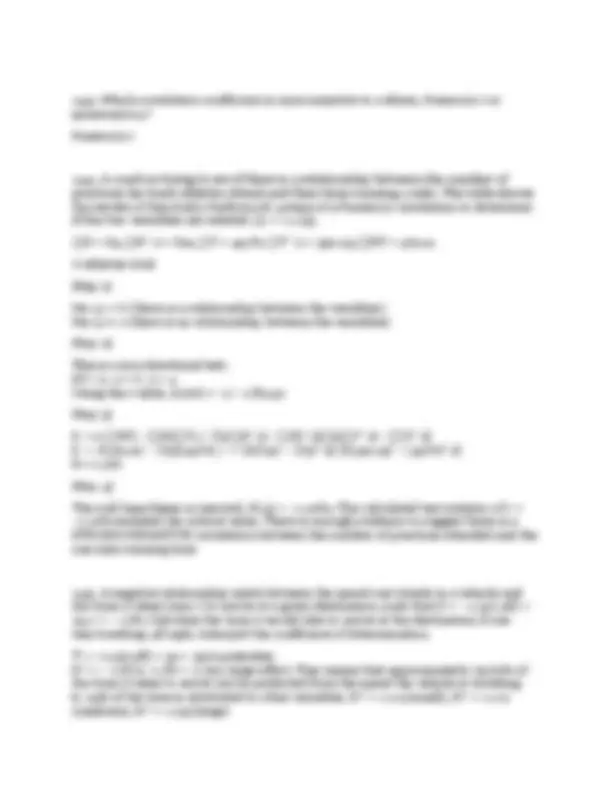
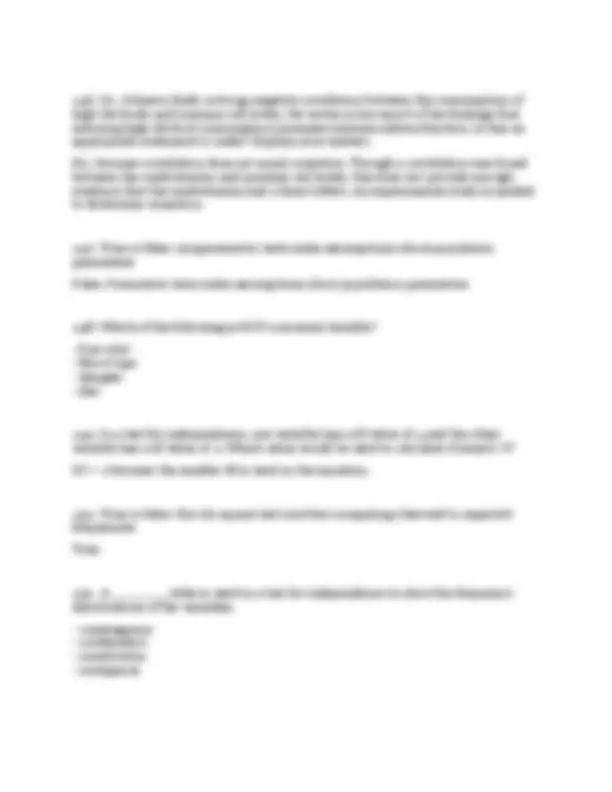
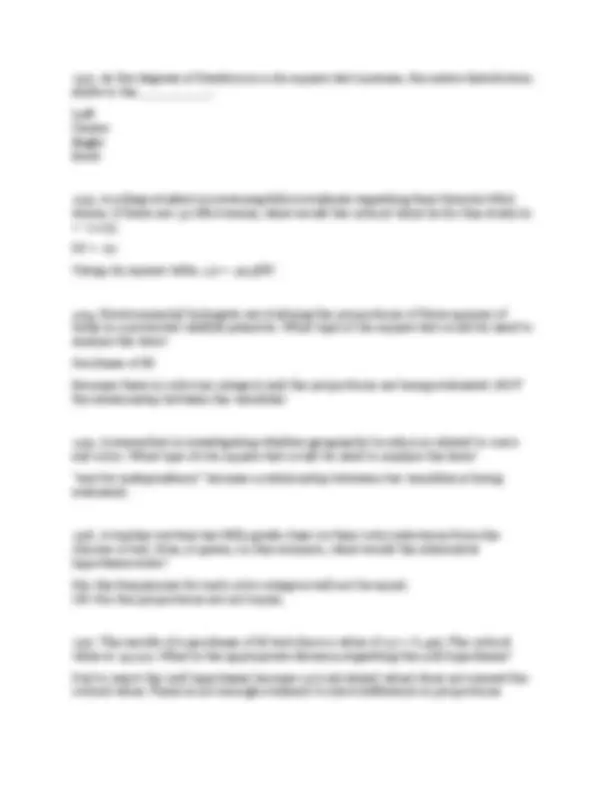
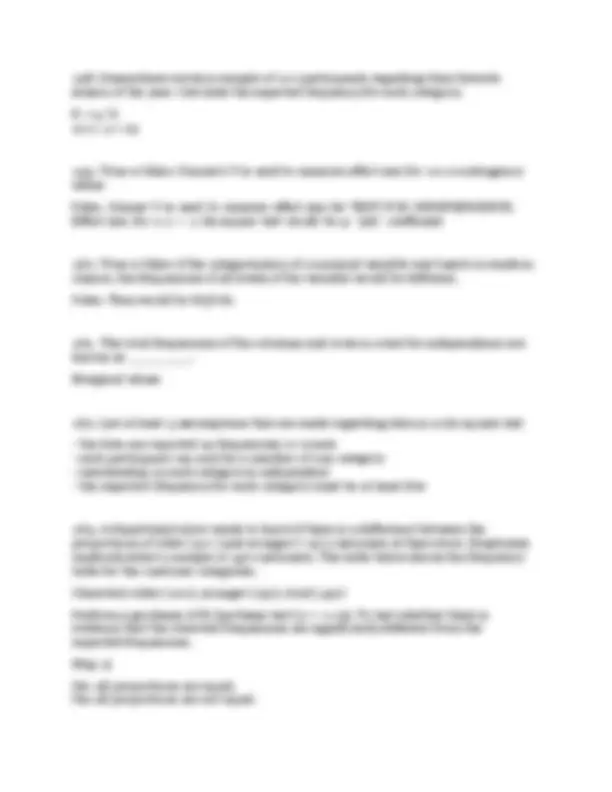
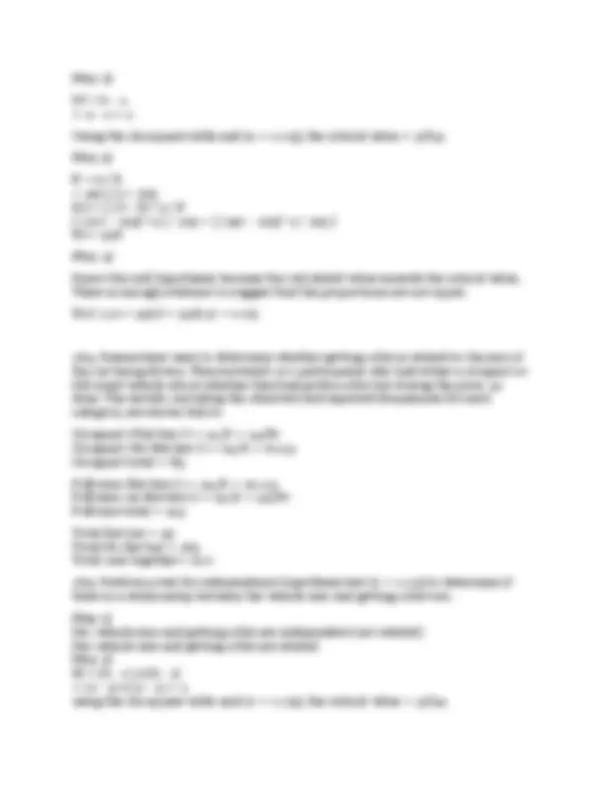
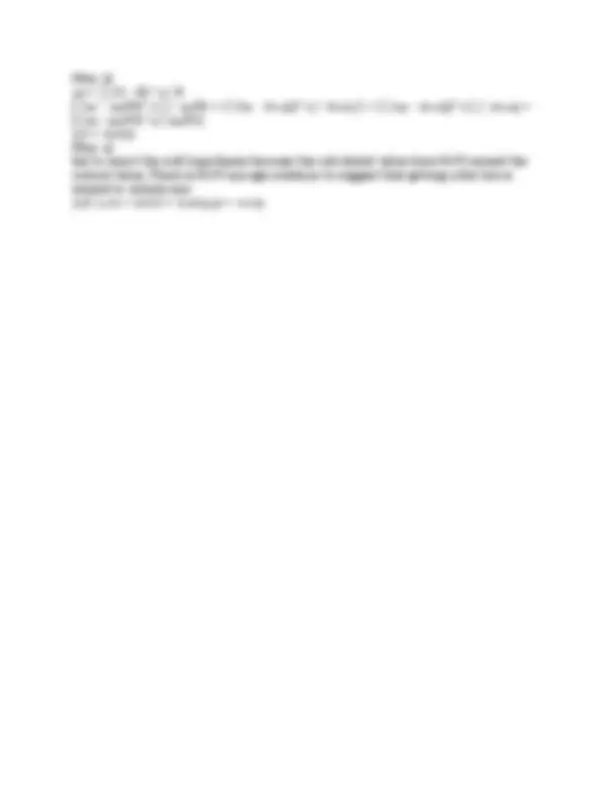


Study with the several resources on Docsity

Earn points by helping other students or get them with a premium plan


Prepare for your exams
Study with the several resources on Docsity

Earn points to download
Earn points by helping other students or get them with a premium plan
Community
Ask the community for help and clear up your study doubts
Discover the best universities in your country according to Docsity users
Free resources
Download our free guides on studying techniques, anxiety management strategies, and thesis advice from Docsity tutors
CNSL 503/ CNSL503 Final Exam| Questions and Answers | Latest 2025/2026 Update | GRADE A (100 out of 100)
Typology: Exams
1 / 34

This page cannot be seen from the preview
Don't miss anything!



























A ratio scale is used when a variable has an absolute zero (Ex: height, weight, exam scores, GPA). Note: this is quantitative data.
Explanation: the steps are identify goals, gather sample, make inferences/conclusions.
It can be from biased sample choice (convenient sampling), selection bias, errors made while collecting the data (measurement bias), response bias, miscalculations, ect.
Medium = 0. Large = 0.
X = xN+ z (s) Value = sample mean + z-score (standard deviation) X = 9.1 + (0.7)(1.1) = 9.87 minutes
measurement of 2.02 g (s = 0.04). Using a critical value of 1.96, construct a 95% confidence interval for these data. Confidence interval range = (xN- (z x s/√n) to (xN+ (z x s/√n) (2.02 - 1.96 x 0.04 / √9) to (2.02 + 1.96 x 0.04 / √9) = 1.994 to 2. 1.994 g < μ < 2.046 g
Compares the difference between two samples or groups of subjects who are completely independent of one another. Members of one group have no relation to second group and a member can't be in both groups.